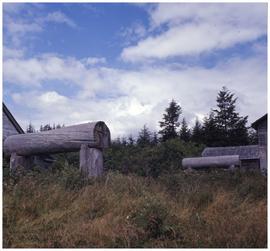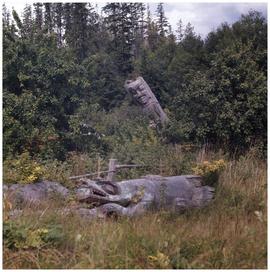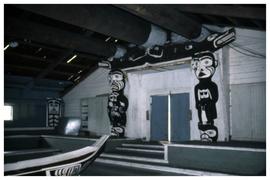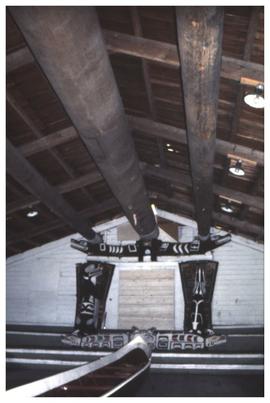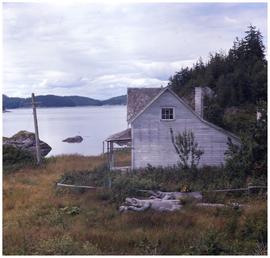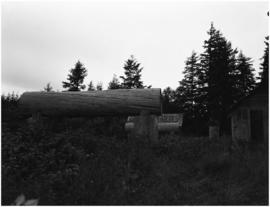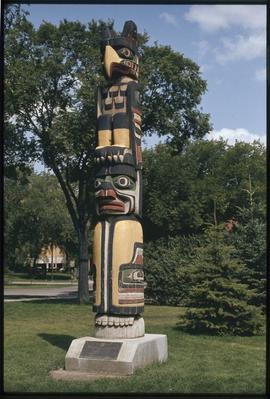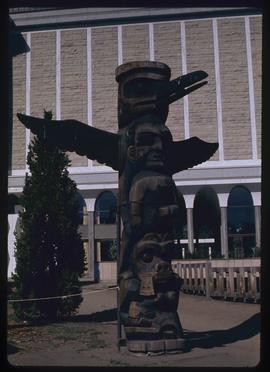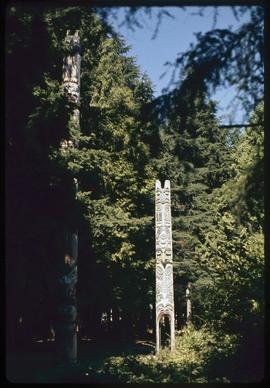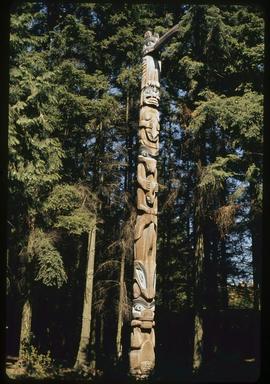This pole was on display at UBC in Totem Park in the 1960’s and 1970’s and moved to the Museum in the late 1970’s. It was carved in 1914 in Tsaxis (Fort Rupert) by George Hunt Sr. for the Edward S. Curtis film "In the Land of the War Canoes" which was originally titled "In the Land of the Head Hunters". The pole was collected by Marius Barbeau and Arthur Price in 1947. The pole was repaired and re-painted by carvers Ellen Neel in 1949 and Mungo Martin in 1950-51. It stood at Totem Park, UBC Campus until it was re-located to the Museum's Great Hall in 1976.
Iconography: Kolus is a young thunderbird. Thunderbird is a supernatural bird identifiable by the presence of ear-like projections or horns on the head, and a re-curved beak. The pole alludes to the story of Tongas people in south Alaska, who migrated south.

